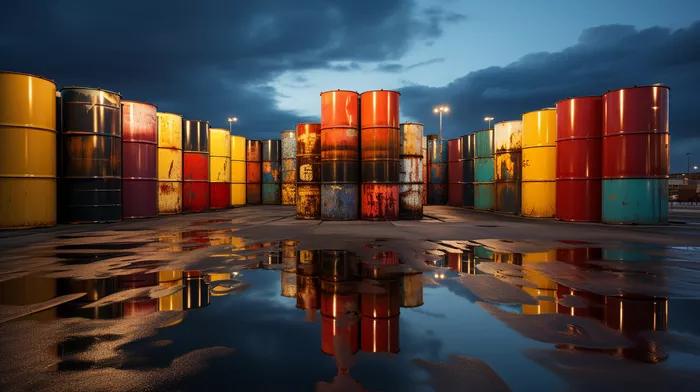The transformation of plankton into crude oil is a fascinating natural process that spans millions of years. Understanding this process is essential for comprehending how fossil fuels are formed and their significance in the global energy landscape. This article delves into the intricate journey of plankton from their existence in ancient seas to becoming the crude oil that powers our modern world.
Introduction to Plankton and Crude Oil
What is Plankton?
Plankton are tiny marine organisms that drift in oceans, seas, and bodies of fresh water. They are primarily classified into two categories: phytoplankton (plant-like) and zooplankton (animal-like). Phytoplankton, such as algae, perform photosynthesis, producing oxygen and organic materials. Zooplankton feed on phytoplankton and other small organisms.
What is Crude Oil?
Crude oil, also known as petroleum, is a liquid fossil fuel formed from the remains of ancient marine organisms, primarily plankton. It is a complex mixture of hydrocarbons and other organic compounds. Crude oil is extracted and refined to produce various fuels and products, including gasoline, diesel, and petrochemicals.
The Formation Process
Step 1: Accumulation of Organic Material
Millions of years ago, ancient seas were teeming with plankton. When these organisms died, their remains settled to the seabed, accumulating in sediment layers. This process was more pronounced in areas with limited oxygen, where the decay of organic material was slower, allowing it to build up.
Step 2: Burial and Compaction
Over time, layers of sediment accumulated on top of the organic-rich material, burying it deeper into the Earth’s crust. As these layers increased in thickness, the pressure and temperature on the buried material also increased. This compaction process squeezed out water and other substances, concentrating the organic material.
Step 3: Diagenesis
Diagenesis is the first stage of transformation, occurring at relatively low temperatures and pressures. During diagenesis, biochemical reactions break down complex organic molecules into simpler compounds. This process produces kerogen, a waxy substance that is a precursor to hydrocarbons.
Step 4: Catagenesis
Catagenesis takes place at higher temperatures and pressures, typically between 60°C and 150°C. In this stage, kerogen undergoes thermal cracking, breaking down into smaller hydrocarbon molecules. This process generates liquid hydrocarbons, forming crude oil, and gaseous hydrocarbons, forming natural gas.
See Also: 7 Processes Used for Crude Oil Separation
Step 5: Migration
Once formed, the liquid hydrocarbons begin to migrate through porous rock formations. This migration occurs due to the pressure differences within the Earth’s crust. The hydrocarbons move upward until they encounter impermeable rock layers, known as cap rocks, which trap them in reservoir rocks.
Step 6: Accumulation in Reservoirs
The hydrocarbons accumulate in these reservoir rocks, forming oil and gas fields. The reservoir rocks, typically sandstone or limestone, have sufficient porosity and permeability to store and transmit hydrocarbons. The cap rocks, often shale or salt formations, prevent the hydrocarbons from escaping to the surface.
Factors Influencing Formation
Type of Organic Material
The type of plankton and the nature of the organic material significantly influence the quality and type of crude oil formed. Marine plankton tends to produce light, sweet crude oil, while terrestrial organic matter can result in heavier, sour crude oil.
Temperature and Pressure
The temperature and pressure conditions during catagenesis play a crucial role in determining the characteristics of the crude oil. Higher temperatures can lead to the formation of lighter hydrocarbons, while lower temperatures may result in heavier, more viscous oil.
Time
The transformation of organic material into crude oil is a slow process that takes millions of years. The age of the source rock and the duration of exposure to heat and pressure impact the maturity of the hydrocarbons and the quality of the crude oil.
Modern Extraction and Refining
Exploration
Geologists and geophysicists use various techniques to explore potential oil fields. Seismic surveys, satellite imagery, and geological mapping help identify promising locations for drilling. Advanced technology allows for more accurate and efficient exploration, reducing the environmental impact.
Drilling
Once a potential oil field is identified, drilling begins. Wells are drilled into the reservoir rocks to extract the hydrocarbons. Offshore drilling involves platforms and rigs to reach underwater reservoirs. Modern drilling techniques, such as horizontal drilling and hydraulic fracturing, enhance the extraction process.
Extraction
The extracted crude oil is brought to the surface and transported to refineries through pipelines, ships, or trucks. At refineries, crude oil undergoes various processes, including distillation, cracking, and reforming, to produce different fuels and petrochemicals.
Refining
The refining process separates crude oil into its various components based on their boiling points. The primary products include gasoline, diesel, jet fuel, and lubricating oils. Refineries also produce petrochemicals used in manufacturing plastics, synthetic fibers, and other industrial products.
Environmental and Economic Impact
Environmental Concerns
The extraction, transportation, and refining of crude oil have significant environmental impacts. Oil spills, air and water pollution, and greenhouse gas emissions are major concerns. Efforts are being made to develop cleaner technologies and alternative energy sources to mitigate these impacts.
Economic Significance
Crude oil is a critical component of the global economy. It is a primary energy source and a raw material for various industries. The oil industry generates significant revenue and employment, influencing geopolitical dynamics and international trade.
Conclusion
The conversion of plankton into crude oil is a remarkable natural process that underscores the complexity and interconnectedness of Earth’s systems. Understanding this process provides valuable insights into the formation of fossil fuels and their role in shaping human civilization. As we move towards a more sustainable future, balancing the demand for energy with environmental stewardship remains a paramount challenge.
Related topics:






























